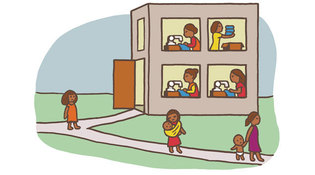 loading
loading
FindingsSweatshops opening the door to changeBangladeshi women find opportunity in garment factories.  Gregory NemecView full imageFor those concerned about the catastrophic deaths of garment workers, A. Mushfiq Mobarak has a blunt message: “Don’t stop buying clothing from Bangladesh.” Mobarak, an economist at the School of Management, argues that the “explosive” growth of the nation’s garment industry benefits girls and young women, who hold most of the sector’s 4 million jobs. The availability of factory jobs is a “significant” reason why girls are staying in school longer and delaying marriage and childbirth, Mobarak and coauthor Rachel Heath ’11PhD postulate in the Journal of Development Economics. Bangladesh’s garment industry, “virtually nonexistent” in 1980, is now one of the world’s largest. Fatal factory fires and a building collapse have killed more than a thousand workers in recent years, prompting calls for boycotts until conditions improve. Mobarak and Heath say that’s the wrong answer, because the factories have created the first job opportunities for Bangladeshi women. By comparing pre- and post-factory data in villages close to new factories and in remoter towns, the economists estimated the influence of the new jobs on choices about girls’ school enrollment, age of marriage, and age at the birth of their first child. Older girls might leave school to work in a factory. But because employees who are literate and numerate draw higher paychecks, younger girls are staying in school longer, they found. “For the first time, it becomes worthwhile to invest in girls’ education,” Mobarak says in a phone interview. Are the authors, who say they have no ties to the garment industry, making a case for sweatshops? “It’s a case against this knee-jerk reaction that we need to stop importing from Bangladesh,” Mobarak responds. “I do believe negatives also exist. The right policy response is not to ban imports from Bangladesh but to invest in factory safety.”
The comment period has expired.
|
|